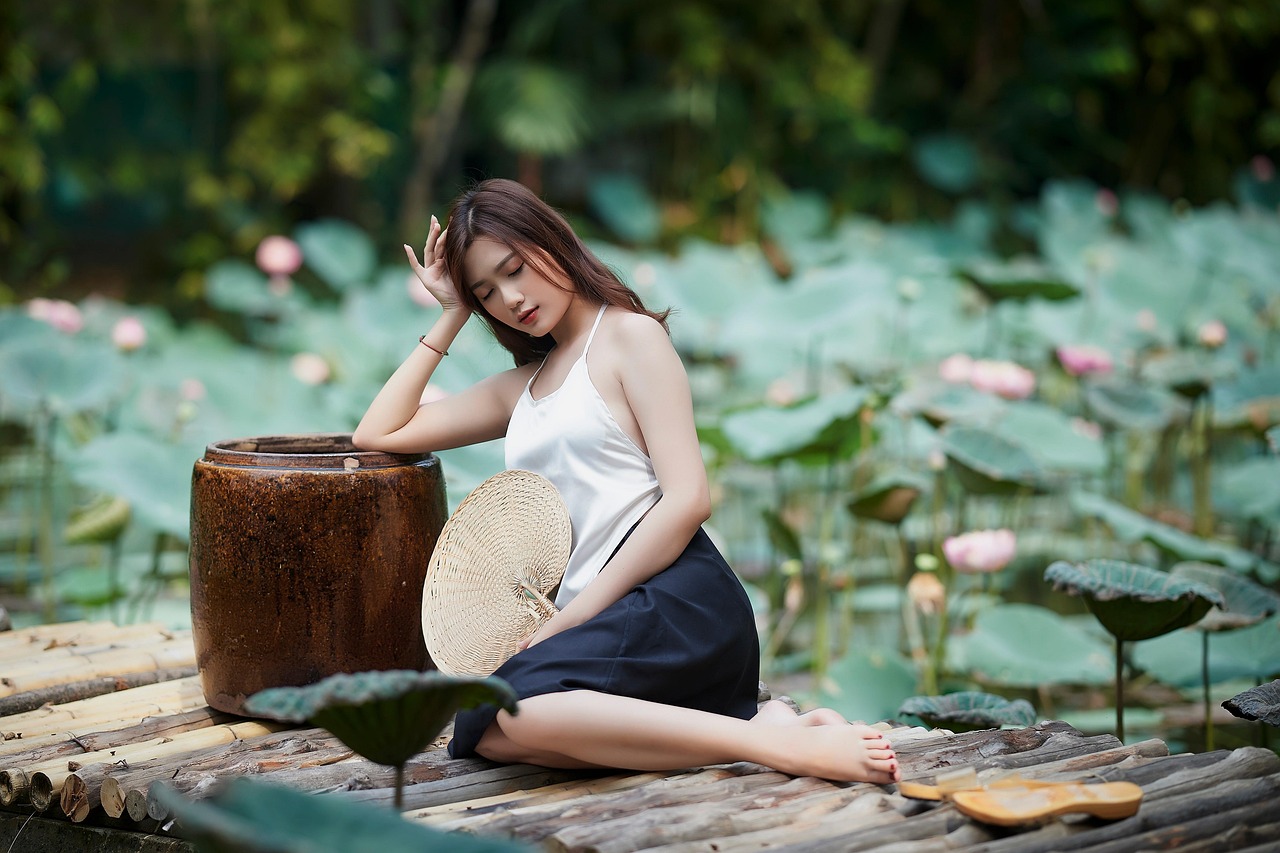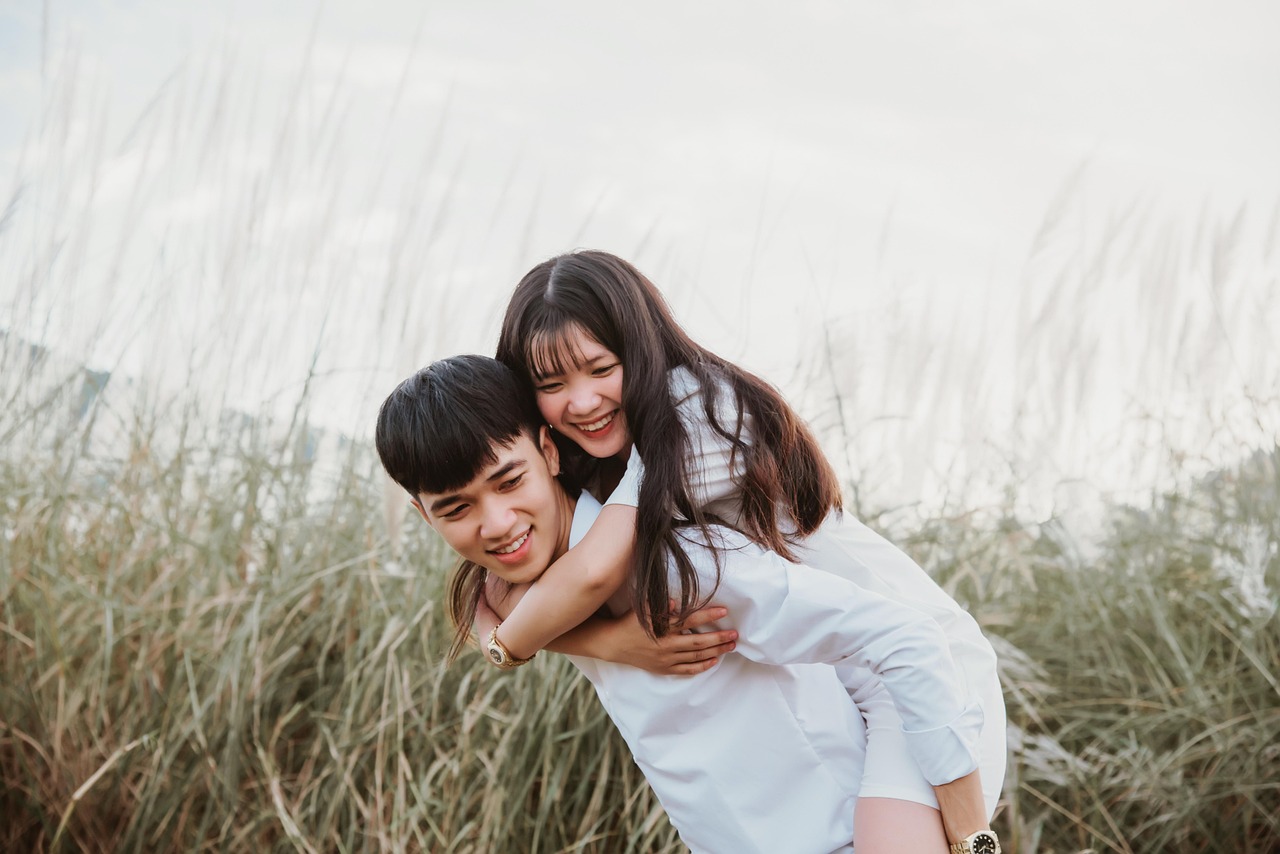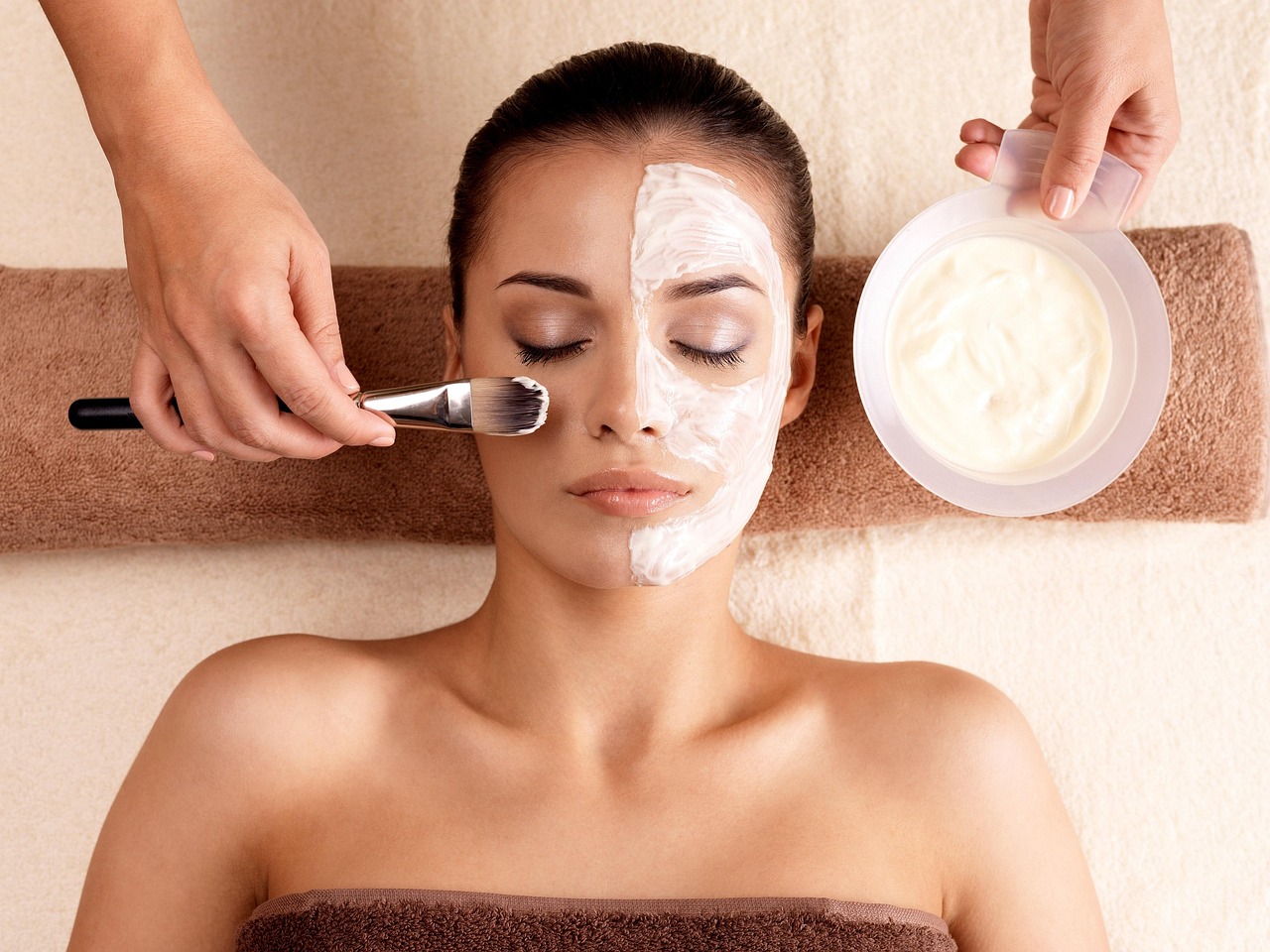This article explores the various Asian massage techniques that can help alleviate anxiety, detailing their benefits, methodologies, and how they contribute to overall mental well-being.
Understanding Anxiety and Its Impact
Anxiety is a prevalent mental health issue that affects millions globally. Symptoms can range from excessive worry to physical manifestations like increased heart rate. Understanding these symptoms is crucial for exploring effective treatments, including various Asian massage techniques that promote relaxation and mental clarity.
What Are Asian Massage Techniques?
Asian massage techniques encompass diverse practices originating from cultures such as Chinese, Thai, and Japanese traditions. Each method offers unique approaches aimed at promoting relaxation and alleviating stress, thereby contributing to enhanced mental well-being.
The Role of Traditional Chinese Medicine
Traditional Chinese Medicine (TCM) significantly influences many Asian massage techniques. TCM emphasizes the balance of energy, known as Qi, which is vital for both mental and physical health. Techniques derived from TCM, such as acupressure, focus on restoring this balance to alleviate anxiety.
Acupressure: A Key Technique
Acupressure involves applying pressure to specific points on the body, which can relieve anxiety and promote relaxation. By targeting these points, individuals may experience enhanced overall well-being and reduced stress levels.
Tui Na: Therapeutic Touch
Tui Na, a form of Chinese therapeutic massage, combines acupressure with manipulation techniques. This method aims to restore balance and alleviate anxiety through targeted approaches that focus on both physical and emotional health.
Thai Massage: A Holistic Approach
Thai massage incorporates yoga-like stretches along with deep tissue techniques. This holistic approach not only alleviates physical tension but also reduces mental stress, making it an effective method for managing anxiety.
The Benefits of Asian Massage for Anxiety Relief
- Reduced muscle tension
- Improved circulation
- Enhanced emotional well-being
These benefits make Asian massage techniques effective complementary therapies for anxiety relief, addressing both physical and emotional symptoms.
How to Choose the Right Asian Massage Technique
Selecting the appropriate Asian massage technique depends on individual preferences and specific anxiety symptoms. Understanding the unique benefits of each method can guide this choice effectively.
Consulting with a Professional
Consulting a qualified massage therapist can help individuals identify the most suitable Asian massage techniques tailored to their anxiety relief needs.
Self-Care Practices and Techniques
Incorporating self-care practices, such as at-home acupressure or guided Thai stretching, can complement professional treatments and enhance anxiety management strategies.
Integrating Asian Massage into Your Wellness Routine
Integrating Asian massage techniques into a regular wellness routine can significantly enhance overall mental health, providing ongoing support for managing anxiety effectively.
Creating a Relaxing Environment
Establishing a calming environment during massage sessions can enhance relaxation and amplify the therapeutic benefits of Asian massage techniques.
Combining Techniques for Maximum Effect
Combining different Asian massage techniques can provide a more comprehensive approach to anxiety relief, addressing both physical and emotional aspects of the condition.

Understanding Anxiety and Its Impact
Anxiety is a prevalent mental health condition that affects millions of individuals around the globe. It manifests in various forms, including generalized anxiety disorder, panic disorder, and social anxiety disorder. Understanding the symptoms of anxiety, such as excessive worry, restlessness, and difficulty concentrating, is essential for effective management.
The impact of anxiety extends beyond mere feelings of unease. It can lead to physical symptoms like increased heart rate, muscle tension, and fatigue, significantly affecting one’s quality of life. Moreover, anxiety can interfere with daily activities, relationships, and overall well-being. Recognizing these symptoms is the first step towards addressing the issue and seeking appropriate treatments.
As the prevalence of anxiety continues to rise, exploring effective treatments becomes increasingly important. Traditional approaches often include therapy and medication; however, many individuals seek complementary therapies to enhance their mental health. Among these, Asian massage techniques have gained attention for their potential to alleviate anxiety symptoms.
Asian massage techniques, derived from various cultural practices, focus on promoting relaxation and restoring balance within the body. Techniques such as acupressure, Tui Na, and Thai massage are designed to relieve tension and stress, making them valuable tools in managing anxiety. Each method offers unique benefits and approaches, catering to individual preferences and needs.
In summary, understanding anxiety and its effects is crucial for individuals seeking relief. By recognizing the symptoms and exploring diverse treatment options, including Asian massage techniques, one can take proactive steps towards better mental health.
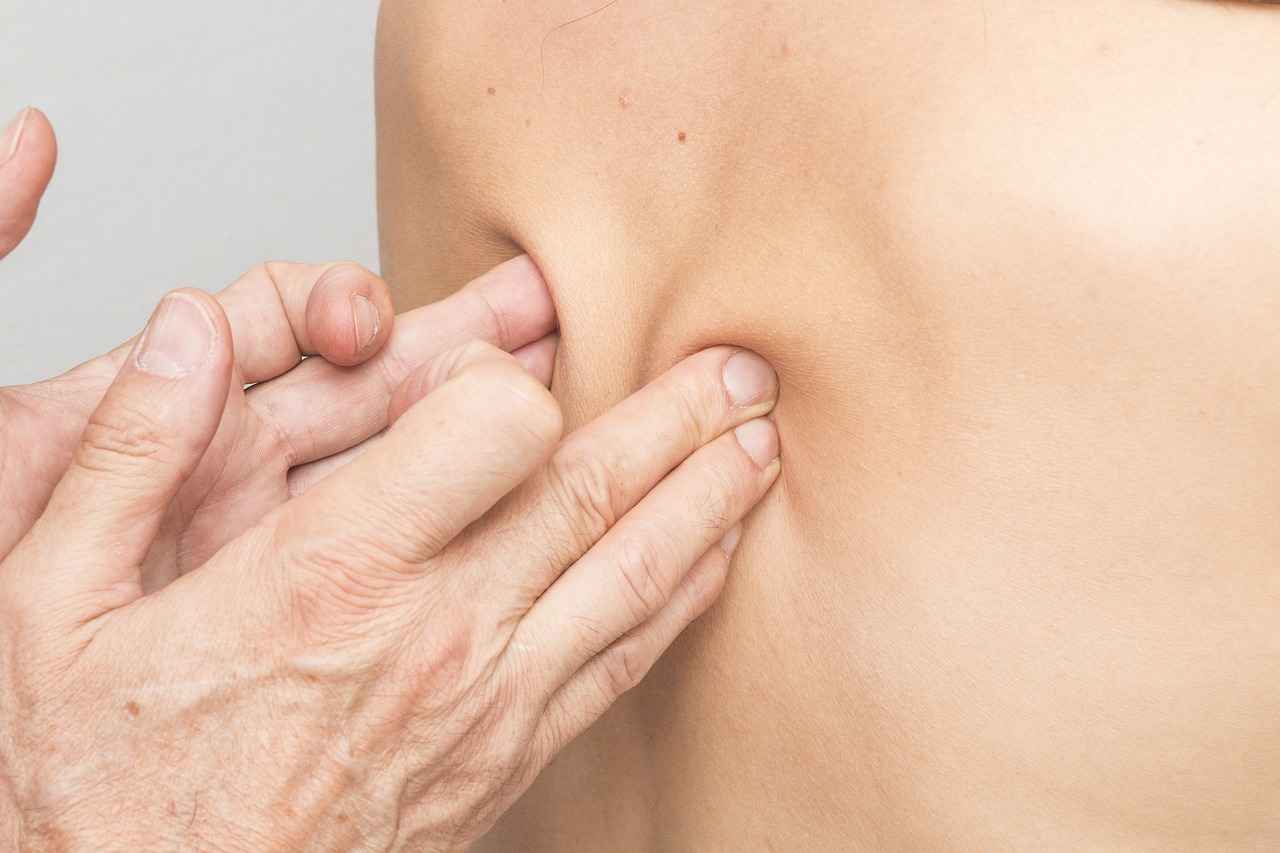
What Are Asian Massage Techniques?
Asian massage techniques are a diverse array of practices derived from various cultures, each offering unique methods aimed at promoting relaxation and alleviating stress. These techniques have been refined over centuries and are deeply rooted in the philosophies and traditions of their respective cultures.
- Chinese Massage: This includes practices such as Tui Na and Acupressure. Tui Na combines acupressure with therapeutic touch, focusing on energy channels to restore balance. Acupressure targets specific points on the body, promoting relaxation and reducing anxiety.
- Thai Massage: Known for its incorporation of yoga-like stretches, Thai massage enhances flexibility and releases muscle tension. This holistic approach helps not only in physical relaxation but also in calming the mind.
- Japanese Shiatsu: This technique utilizes finger pressure on specific points, similar to acupressure. Shiatsu aims to balance the body’s energy and promote overall well-being, making it effective for stress relief.
Each of these techniques is designed to address physical and mental health issues, including anxiety. By focusing on the flow of energy within the body, these massages help in alleviating stress and enhancing emotional stability.
Furthermore, the benefits of Asian massage extend beyond immediate relaxation. Regular sessions can lead to improved circulation, reduced muscle tension, and a greater sense of calm. As individuals engage with these practices, they often find a deeper connection to their body and mind, fostering a more holistic approach to wellness.
In summary, Asian massage techniques offer a rich tapestry of methods that cater to various needs and preferences. Whether through the gentle pressure of Shiatsu or the dynamic stretches of Thai massage, these practices provide valuable tools for managing anxiety and enhancing overall mental health.
The Role of Traditional Chinese Medicine
Traditional Chinese Medicine (TCM) is a holistic approach to health that has been practiced for thousands of years. It focuses on the concept of Qi (pronounced “chee”), which is considered the vital life force that flows through the body. The balance and flow of Qi are essential for maintaining both mental and physical health. In the context of Asian massage, TCM principles are intricately woven into various techniques, enhancing their effectiveness in promoting relaxation and alleviating anxiety.
TCM posits that blockages or imbalances in the flow of Qi can lead to various health issues, including anxiety. By applying specific massage techniques, practitioners aim to restore this balance, enabling the body to heal itself. Techniques such as acupressure and Tui Na are particularly effective in stimulating the body’s energy points, promoting a sense of calm and well-being.
Acupressure, a significant aspect of TCM, involves applying pressure to specific points on the body, known as acupoints. This method not only alleviates physical tension but also addresses emotional disturbances. Research has shown that regular acupressure can lead to significant reductions in anxiety levels, making it a valuable tool for those seeking relief.
Tui Na, another technique rooted in TCM, combines various hand techniques and acupressure to stimulate the flow of Qi. This therapeutic massage not only focuses on muscle relaxation but also aims to balance the body’s energy systems. Tui Na can be particularly beneficial for individuals experiencing stress-related symptoms, as it addresses both the physical and emotional aspects of anxiety.
In summary, the integration of Traditional Chinese Medicine into Asian massage techniques enriches the therapeutic experience, offering a comprehensive approach to mental health. By focusing on the balance of Qi, TCM provides effective strategies for managing anxiety, promoting overall wellness, and enhancing quality of life.
Acupressure: A Key Technique
Acupressure is an ancient healing technique rooted in Traditional Chinese Medicine (TCM). This method focuses on applying pressure to specific points on the body, known as acupoints, to stimulate the body’s natural healing processes. By targeting these key areas, acupressure helps relieve various ailments, particularly anxiety and stress.
Understanding how acupressure works requires a brief overview of its principles. TCM posits that the body has a vital energy called Qi (pronounced “chee”), which flows through meridians or pathways. When this energy is blocked or imbalanced, it can lead to physical and emotional discomfort. Acupressure seeks to restore this balance by applying pressure to the acupoints, promoting relaxation and well-being.
The benefits of acupressure for anxiety are numerous. Studies have shown that regular acupressure sessions can significantly reduce levels of cortisol, the hormone associated with stress. By alleviating muscle tension and promoting blood circulation, acupressure not only calms the mind but also enhances overall physical health.
- Relief from Anxiety Symptoms: Applying pressure to acupoints like LI4 (located between the thumb and index finger) and PC6 (on the inner forearm) can help soothe anxiety.
- Improved Sleep Quality: Regular acupressure can facilitate better sleep, which is often disrupted by anxiety.
- Enhanced Emotional Well-being: By promoting relaxation, acupressure can lead to improved mood and emotional stability.
Incorporating acupressure into your self-care routine can be simple and effective. You can practice it at home by learning basic techniques or seek guidance from a trained professional. Whether used alone or in conjunction with other therapies, acupressure serves as a powerful tool for managing anxiety and enhancing overall wellness.
Key Acupoints for Anxiety Relief:1. LI4 (Hegu)2. PC6 (Neiguan)3. ST36 (Zusanli)
Tui Na: Therapeutic Touch
Tui Na is a traditional Chinese therapeutic massage technique that intricately blends acupressure and physical manipulation. This ancient practice is deeply rooted in the principles of Traditional Chinese Medicine (TCM) and is designed to promote overall well-being by restoring the body’s natural balance.
At its core, Tui Na focuses on the flow of Qi (pronounced “chee”), the vital energy believed to circulate through the body’s meridians. By applying targeted pressure to specific points, Tui Na aims to alleviate physical discomfort and emotional distress, making it particularly effective for those experiencing anxiety.
The techniques used in Tui Na are diverse and can include a variety of methods such as:
- Pushing – Gliding strokes that help to relax muscles.
- Rolling – Circular movements that stimulate circulation.
- Pressing – Targeted pressure applied to acupressure points to relieve tension.
- Stretching – Gentle stretches that enhance flexibility and promote relaxation.
Research indicates that Tui Na can significantly reduce levels of cortisol, the hormone associated with stress, thereby facilitating a state of calmness. Clients often report feeling more relaxed and centered after a session, which can lead to improved mental clarity and emotional stability.
Incorporating Tui Na into a regular wellness routine can be transformative. Not only does it address physical ailments such as muscle tension and joint pain, but it also serves as a powerful tool for managing anxiety. Many practitioners recommend combining Tui Na with mindful breathing exercises or meditation to enhance its calming effects.
Ultimately, Tui Na stands out as a holistic approach to health, harmonizing the body and mind. By integrating this therapeutic touch into your self-care regimen, you can cultivate a deeper sense of peace and resilience against the challenges of daily life.
Thai Massage: A Holistic Approach
Thai massage is a unique and ancient practice that combines elements of yoga, acupressure, and deep tissue techniques. This holistic approach is designed to promote overall wellness by addressing both physical and mental health. Unlike traditional Western massage, Thai massage involves a series of yoga-like stretches that enhance flexibility while also applying targeted pressure to relieve tension in the muscles.
One of the most significant benefits of Thai massage is its ability to alleviate physical tension. The deep tissue techniques used in Thai massage work to release knots and tightness in the muscles, which can accumulate due to stress or poor posture. As a result, clients often experience a profound sense of relaxation that extends beyond the physical realm.
Moreover, the incorporation of breathwork and mindful movement during a Thai massage session helps to cultivate a deeper connection between the mind and body. This practice encourages individuals to focus on their breath, fostering a state of mindfulness that can significantly reduce mental stress and anxiety levels. By promoting relaxation and mental clarity, Thai massage serves as a powerful tool for managing anxiety.
Research has shown that regular sessions of Thai massage can lead to improved emotional well-being. The combination of physical manipulation and stretching helps to release endorphins, the body’s natural mood lifters. This biochemical response not only enhances feelings of happiness but also contributes to an overall sense of calm.
In summary, Thai massage is more than just a physical treatment; it is a comprehensive approach to wellness that addresses both the body and mind. By incorporating this ancient practice into your self-care routine, you can experience significant improvements in both your physical health and mental clarity, making it an invaluable resource for anyone seeking relief from anxiety.
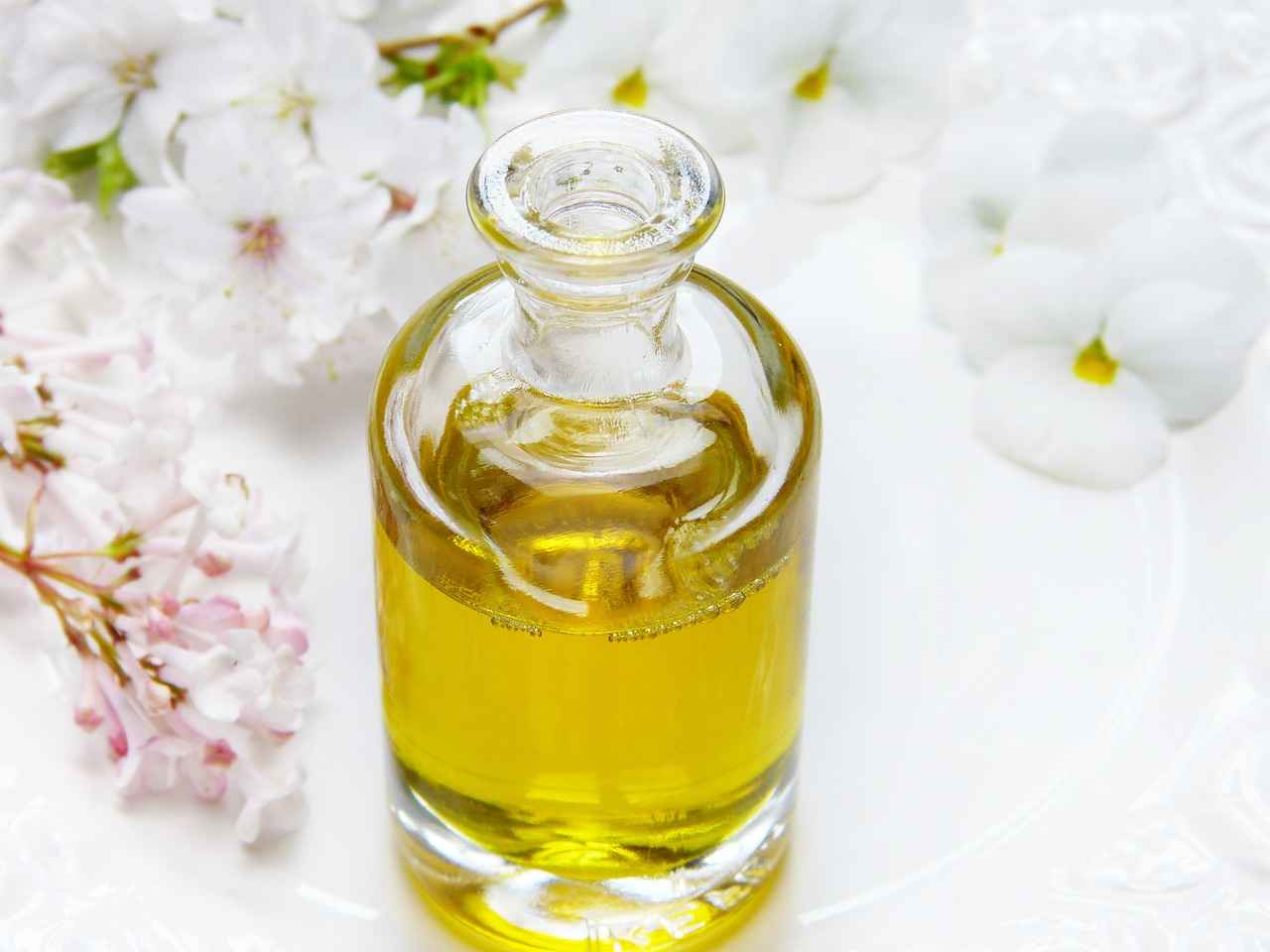
The Benefits of Asian Massage for Anxiety Relief
Asian massage techniques have gained recognition for their ability to provide anxiety relief. These practices, rooted in ancient traditions, offer a holistic approach to mental well-being by addressing both physical and emotional aspects of anxiety.
One of the primary benefits of Asian massage is the reduction of muscle tension. Techniques such as acupressure and Tui Na focus on relieving tightness in the muscles, which is often a physical manifestation of anxiety. By alleviating this tension, individuals may experience a significant decrease in anxiety symptoms.
Additionally, improved circulation is another crucial benefit derived from these massage techniques. Enhanced blood flow helps deliver oxygen and nutrients to the body, promoting overall health and vitality. Better circulation can also aid in the release of endorphins, the body’s natural mood lifters, which can further alleviate feelings of anxiety.
Moreover, Asian massage techniques contribute to emotional well-being. The calming effects of these therapies can lead to a more balanced emotional state, allowing individuals to cope with stress more effectively. Techniques like Thai massage incorporate mindfulness and deep breathing, which are essential for grounding oneself during moments of anxiety.
Furthermore, these massage practices often encourage a sense of connection and comfort. The nurturing touch of a skilled therapist can foster a safe environment, enabling individuals to explore their feelings and release pent-up emotions. This therapeutic bond can be instrumental in enhancing one’s mental health.
Incorporating Asian massage into a regular wellness routine not only addresses anxiety but also promotes overall mental clarity and emotional resilience. By embracing these techniques, individuals can take proactive steps toward managing their anxiety and enhancing their quality of life.
Overall, the benefits of Asian massage for anxiety relief are profound and multifaceted, making these techniques a valuable addition to any mental health strategy.
Physical Benefits of Asian Massage
Asian massage techniques are renowned for their ability to promote physical well-being, particularly in the context of anxiety relief. These methods are not merely about relaxation; they offer a range of physical benefits that can significantly enhance overall health.
One of the primary advantages of these techniques is their ability to decrease muscle tension. Many individuals experience tightness in their muscles due to stress and anxiety. Asian massage methods, such as Tui Na and Thai massage, utilize a combination of pressure and stretching to release this tension. This release can lead to a greater sense of physical comfort and relaxation.
Furthermore, improved blood circulation is another vital benefit of Asian massage. Techniques like Shiatsu and acupressure stimulate blood flow throughout the body. Enhanced circulation not only helps in delivering oxygen and nutrients to muscles but also aids in the removal of toxins. This process is essential for maintaining muscle health and overall vitality.
Moreover, these massage techniques can promote better flexibility and range of motion. Regular sessions can help in loosening stiff joints and muscles, allowing for greater ease of movement. This is particularly beneficial for individuals who lead a sedentary lifestyle or those who experience physical discomfort due to anxiety-related tension.
In addition to these physical benefits, Asian massage techniques foster a deep sense of relaxation, which can further alleviate the physical symptoms of anxiety. This holistic approach addresses not just the body but also the mind, contributing to an overall feeling of well-being.
In summary, the physical benefits of Asian massage techniques are multifaceted, encompassing muscle tension relief, improved circulation, and enhanced flexibility. These elements work together to create a comprehensive approach to managing anxiety and promoting physical health.
Mental and Emotional Benefits
Asian massage techniques offer a holistic approach to mental and emotional well-being, providing significant benefits that extend beyond mere physical relief. These practices are designed to address the interconnectedness of body and mind, fostering a state of relaxation that can effectively alleviate anxiety and promote emotional stability.
- Enhanced Mental Clarity: By stimulating specific pressure points and promoting relaxation, Asian massage techniques can clear mental fog, allowing individuals to think more clearly and make better decisions. This mental clarity is crucial for managing anxiety, as it helps individuals gain perspective on their thoughts and feelings.
- Emotional Stability: Regular sessions of Asian massage can lead to improved emotional regulation. Techniques such as acupressure and Tui Na help release pent-up emotions and stress, enabling individuals to experience a more balanced emotional state. This stability is essential for coping with daily stressors and anxiety triggers.
- Stress Reduction: The calming nature of Asian massage techniques helps lower cortisol levels, the hormone associated with stress. By reducing stress, individuals may find it easier to manage anxiety and cultivate a sense of inner peace.
- Increased Mindfulness: Many Asian massage practices incorporate mindfulness elements, encouraging individuals to focus on their breath and bodily sensations. This mindfulness can enhance self-awareness, helping individuals recognize anxiety symptoms earlier and respond more effectively.
- Improved Sleep Quality: Anxiety often disrupts sleep patterns, but the relaxation induced by Asian massage can lead to deeper, more restorative sleep. Better sleep contributes to overall mental health, making it easier to tackle anxiety during waking hours.
In summary, the mental and emotional benefits of Asian massage techniques are profound. By promoting mental clarity, emotional stability, and stress reduction, these practices serve as effective tools for managing anxiety. Integrating them into a wellness routine can significantly enhance one’s ability to cope with life’s challenges.
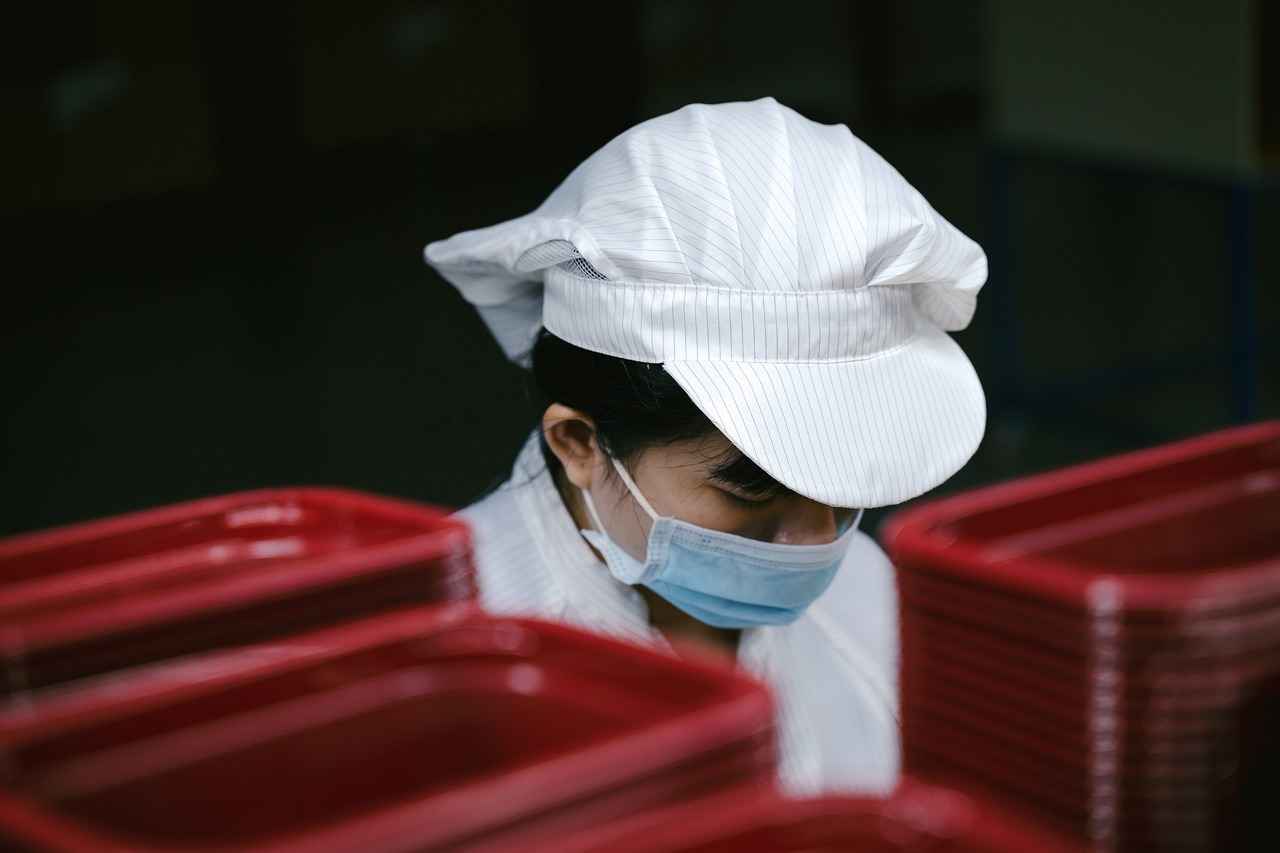
How to Choose the Right Asian Massage Technique
Choosing the right Asian massage technique can be a transformative experience, especially for those dealing with anxiety. With a variety of methods available, it’s essential to consider personal preferences and specific anxiety symptoms. This guide aims to simplify the selection process by highlighting the unique benefits of various techniques.
Identifying Personal Preferences
Before diving into specific techniques, it’s important to reflect on what you personally enjoy. Do you prefer a gentle touch or a more vigorous approach? Are you looking for a holistic experience that integrates physical and mental well-being? Understanding your preferences can significantly influence your choice.
Recognizing Specific Anxiety Symptoms
- Physical Symptoms: If you experience muscle tension or chronic pain related to anxiety, techniques like Tui Na or Shiatsu may be beneficial as they focus on deep tissue manipulation.
- Mental Symptoms: For those who struggle with racing thoughts or emotional instability, Thai massage or acupressure can promote relaxation and mental clarity.
Understanding Different Techniques
Each Asian massage technique offers distinct benefits:
- Acupressure: This technique targets specific pressure points to alleviate anxiety and enhance relaxation.
- Tui Na: A combination of acupressure and manipulation that restores balance and reduces stress.
- Thai Massage: Incorporates stretching and deep tissue work to relieve both physical and mental tension.
Consulting with a Professional
Engaging with a qualified massage therapist can provide personalized recommendations based on your unique symptoms and preferences. They can guide you in selecting the most suitable technique, ensuring an effective and tailored experience.
Incorporating Self-Care Techniques
In addition to professional treatments, consider practicing self-care at home. Techniques such as guided stretching or self-administered acupressure can complement your massage sessions, further enhancing your anxiety management strategies.
By carefully considering your preferences and symptoms, you can make an informed decision that aligns with your mental health needs. Selecting the right Asian massage technique not only aids in alleviating anxiety but also contributes to a holistic approach to well-being.
Consulting with a Professional
When it comes to managing anxiety, consulting with a qualified massage therapist is an essential step that can significantly enhance your journey towards relief. These professionals possess the expertise to guide you through the myriad of Asian massage techniques tailored specifically for your needs. By understanding the unique characteristics of each method, you can discover the most suitable approach to alleviate anxiety effectively.
Asian massage techniques, such as acupressure, Tui Na, and Thai massage, each offer distinct benefits that cater to various anxiety symptoms. A skilled therapist can assess your specific situation, taking into account your physical state and emotional well-being, to recommend the most appropriate technique. This personalized consultation not only optimizes the effectiveness of the treatment but also fosters a trusting relationship between you and your therapist.
During your session, the therapist will explain the principles behind the chosen technique, allowing you to understand how it works to relieve anxiety. For instance, acupressure focuses on stimulating specific points on the body to release tension and promote relaxation. In contrast, Thai massage combines stretching and deep tissue work to address both physical and mental stress. This comprehensive understanding empowers you to engage actively in your healing process.
Moreover, a professional massage therapist can teach you self-care practices that complement your sessions. Techniques such as at-home acupressure or guided stretching can be integrated into your daily routine, enhancing the overall effectiveness of your anxiety management strategy. By incorporating these practices, you are not only taking charge of your mental health but also fostering a holistic approach to well-being.
In summary, seeking the guidance of a qualified massage therapist is a crucial step in identifying the right Asian massage techniques for your anxiety relief needs. Their expertise, combined with personalized care, can lead to profound improvements in your mental and emotional health.
Self-Care Practices and Techniques
In today’s fast-paced world, managing anxiety has become increasingly vital for maintaining overall well-being. One effective way to enhance anxiety management is through the incorporation of self-care practices. These practices, such as at-home acupressure and guided Thai stretching, can serve as valuable complements to professional treatments.
At-home acupressure involves applying pressure to specific points on the body, similar to acupuncture but without needles. This technique can help release tension, promote relaxation, and alleviate anxiety symptoms. By learning basic acupressure techniques, individuals can empower themselves to manage anxiety in their daily lives. For instance, pressing the point located between the thumb and index finger can help relieve stress and promote a sense of calm.
Additionally, guided Thai stretching offers a holistic approach to self-care. This practice combines gentle stretching with mindful breathing, enhancing both physical flexibility and mental relaxation. By engaging in regular Thai stretching sessions, individuals can release pent-up tension in their muscles, which often contributes to feelings of anxiety. Moreover, the meditative aspect of this practice encourages mindfulness, allowing individuals to focus on the present moment and reduce anxious thoughts.
Integrating these self-care techniques into a daily routine not only enhances the effectiveness of professional treatments but also fosters a sense of agency in managing anxiety. By prioritizing self-care, individuals can cultivate resilience, improve emotional regulation, and ultimately enhance their overall mental health.
In summary, incorporating self-care practices like at-home acupressure and guided Thai stretching can significantly enhance anxiety management strategies. These techniques offer practical tools for individuals seeking to take charge of their mental well-being and complement traditional therapeutic approaches.

Integrating Asian Massage into Your Wellness Routine
Integrating Asian massage techniques into your regular wellness routine can lead to remarkable improvements in your overall mental health. These ancient practices not only promote physical relaxation but also serve as effective tools for managing anxiety. By incorporating these techniques, individuals can experience ongoing support for their emotional well-being.
Asian massage techniques are rooted in traditions that emphasize the connection between the mind and body. By focusing on this connection, these methods can help individuals navigate the complexities of anxiety. Regular sessions can provide a sense of stability and calmness, allowing for better emotional regulation.
- Reduction in Anxiety Symptoms: Regular massage can lower cortisol levels, the hormone associated with stress, leading to a decrease in anxiety.
- Enhanced Relaxation: Techniques such as acupressure and Tui Na promote relaxation, which is essential for mental clarity.
- Improved Sleep Quality: Many individuals experience improved sleep patterns after incorporating massage, which is crucial for mental health.
To effectively integrate these techniques into your wellness routine, consider the following:
- Schedule Regular Appointments: Aim for consistent sessions to build a routine that supports your mental health.
- Create a Peaceful Environment: Ensure that your massage space is calming, with soft lighting and soothing music.
- Combine Techniques: Explore different Asian massage styles to find what works best for you, such as mixing Thai massage with acupressure for a holistic approach.
In addition to professional sessions, self-care practices can enhance the benefits of Asian massage. Simple techniques such as at-home acupressure or guided stretching can be effective in managing anxiety on a day-to-day basis. These practices empower individuals to take charge of their mental health.
In summary, integrating Asian massage techniques into your wellness routine offers a comprehensive approach to managing anxiety. By prioritizing these practices, you can cultivate a healthier mind and body, fostering a sustainable path toward mental well-being.
Creating a Relaxing Environment
Creating a relaxing environment is essential for maximizing the effectiveness of Asian massage techniques. The ambiance in which a massage is conducted can profoundly influence the overall experience, leading to enhanced relaxation and deeper therapeutic benefits. Here are several key elements to consider when establishing a calming atmosphere.
- Lighting: Soft, dim lighting helps to create a tranquil setting. Consider using candles or soft lamps that emit warm light, which can significantly reduce stress levels.
- Sound: Incorporating soothing sounds, such as nature sounds or gentle instrumental music, can help drown out distracting noises and promote a peaceful mindset.
- Fragrance: Aromatherapy plays a vital role in relaxation. Utilizing essential oils like lavender, chamomile, or eucalyptus can enhance the sensory experience and induce a sense of calm.
- Temperature: Maintaining a comfortable room temperature is crucial. A slightly warmer environment can help relax muscles and enhance the effectiveness of massage techniques.
- Clutter-Free Space: A tidy and organized space can contribute to a clear mind. Ensure that the massage area is free of clutter to help clients feel more at ease.
In addition to these elements, it’s important to encourage a mindset of relaxation before the session begins. Practicing deep breathing exercises or guided meditation can help clients transition into a more relaxed state, setting the stage for a more effective massage.
Ultimately, the goal of creating a calming environment is to facilitate a deeper connection between the therapist and the client, allowing the full range of benefits from Asian massage techniques to be realized. By paying attention to these details, both practitioners and clients can enjoy a more profound and restorative experience.
Combining Techniques for Maximum Effect
Combining different Asian massage techniques can significantly enhance the effectiveness of anxiety relief strategies. Each technique has its unique strengths, and when integrated, they address both the physical and emotional aspects of anxiety, creating a more holistic approach to wellness.
One of the primary advantages of combining techniques is the ability to target multiple symptoms of anxiety simultaneously. For instance, acupressure can effectively relieve muscle tension and promote relaxation, while Thai massage incorporates stretching and movement, which can help release pent-up energy and reduce stress levels. This multifaceted approach ensures that both the body and mind receive the attention they need for optimal relief.
Moreover, the integration of various techniques allows for a more personalized experience. Every individual experiences anxiety differently, and by combining methods such as Tui Na and Shiatsu, practitioners can tailor sessions to meet specific needs. This adaptability is crucial for addressing the unique triggers and symptoms of each person, enhancing the overall therapeutic experience.
Additionally, combining techniques can lead to greater emotional release. For example, while one method may focus on physical manipulation, another could emphasize breathing techniques and mindfulness, fostering a deeper connection between body and mind. This comprehensive approach not only alleviates physical symptoms but also promotes emotional healing, helping individuals to process their feelings and reduce anxiety.
When considering the combination of Asian massage techniques, it is essential to consult with a qualified therapist. They can assess individual needs and recommend the most effective combinations to maximize benefits. Furthermore, incorporating self-care practices, such as guided breathing exercises or at-home acupressure, can complement professional sessions and provide ongoing support for anxiety management.
In conclusion, the synergy created by combining different Asian massage techniques offers a powerful tool for anxiety relief. By addressing both the physical and emotional components of anxiety, individuals can experience a more profound sense of well-being and resilience in their daily lives.
Frequently Asked Questions
- What are the main benefits of Asian massage techniques for anxiety?
Asian massage techniques can significantly reduce anxiety by alleviating muscle tension, improving circulation, and promoting emotional well-being. They help create a sense of relaxation and balance, making them effective complementary therapies for anxiety management.
- How do I choose the right Asian massage technique for my anxiety?
Selecting the right technique depends on your personal preferences and specific anxiety symptoms. It’s beneficial to consult with a qualified massage therapist who can guide you in finding the most suitable method for your needs.
- Can I practice Asian massage techniques at home?
Absolutely! You can incorporate self-care practices like at-home acupressure or guided Thai stretching to complement professional treatments. These techniques can enhance your overall anxiety management strategy.
- How often should I receive Asian massage treatments for anxiety relief?
The frequency of treatments can vary based on individual needs. Many people find that regular sessions, whether weekly or bi-weekly, can provide ongoing support in managing anxiety effectively.
- Is it necessary to create a specific environment for Asian massage?
Yes, establishing a calming environment during your massage sessions can greatly enhance relaxation and amplify the therapeutic benefits of Asian massage techniques. Soft lighting, soothing music, and comfortable temperatures can make a big difference!
